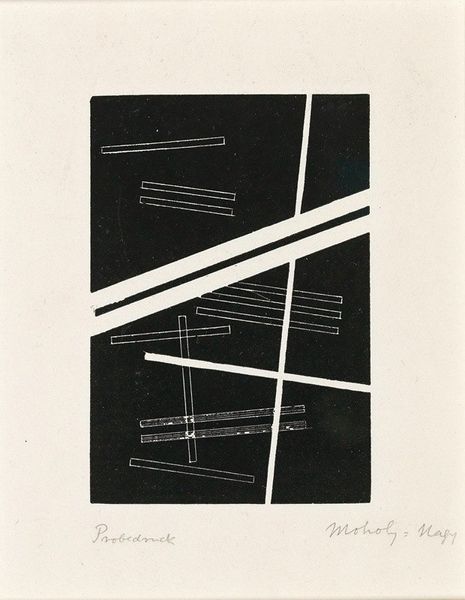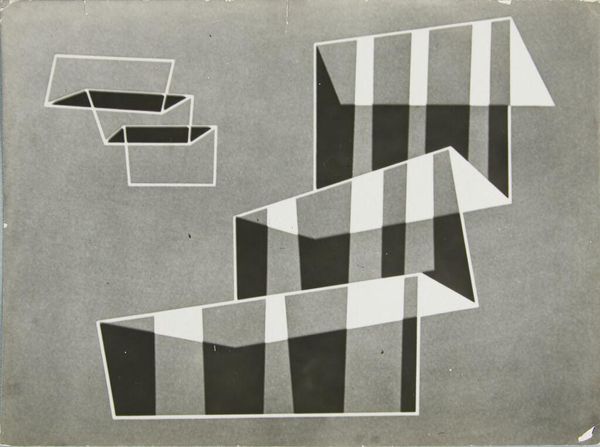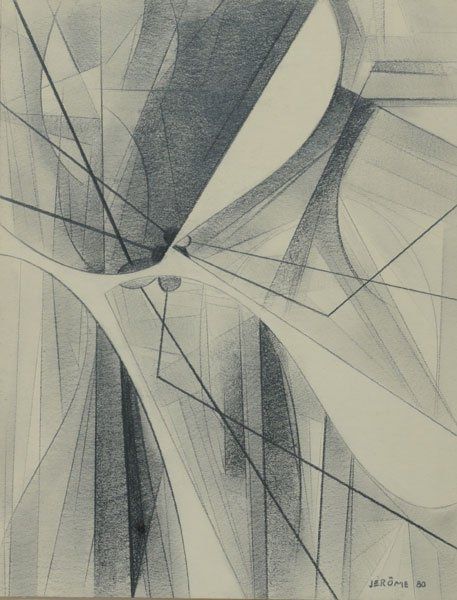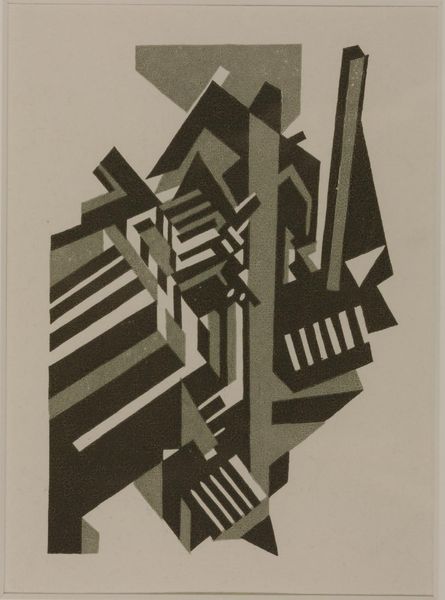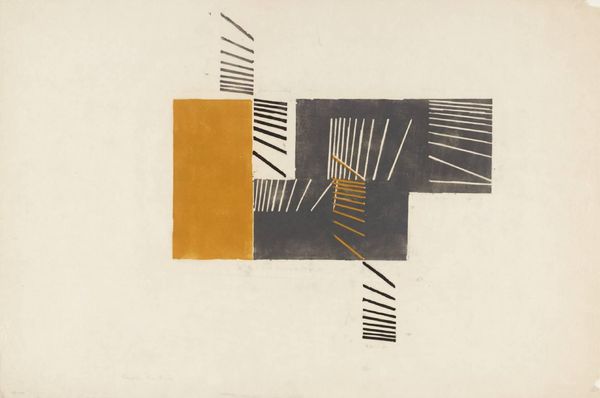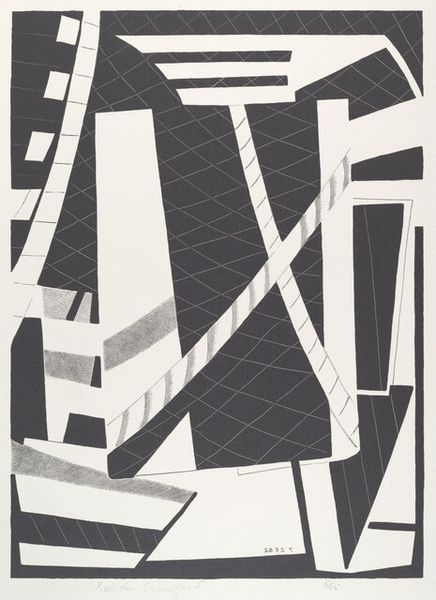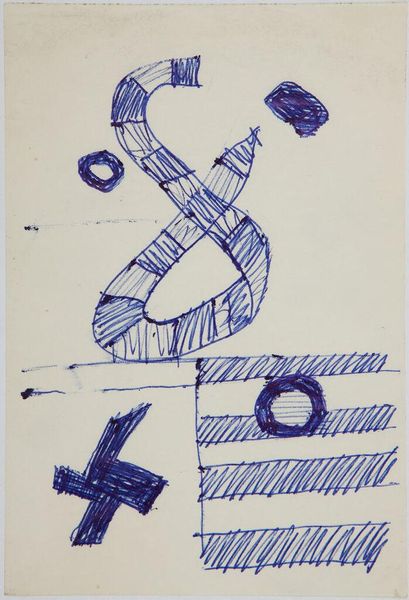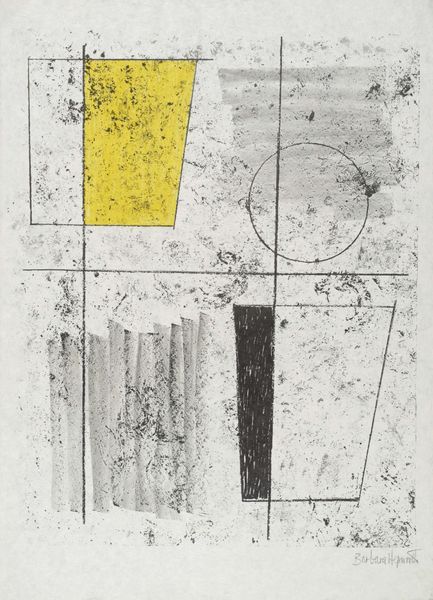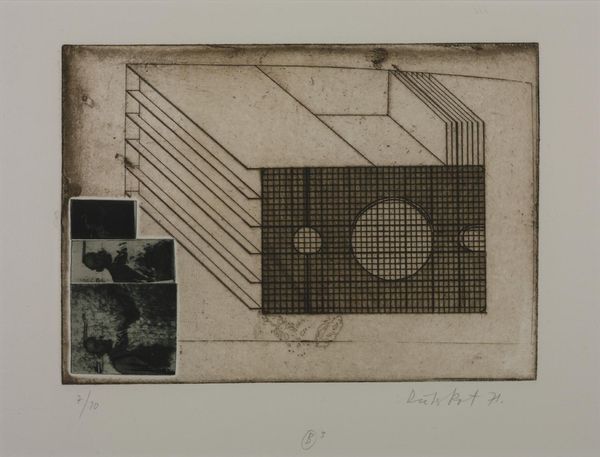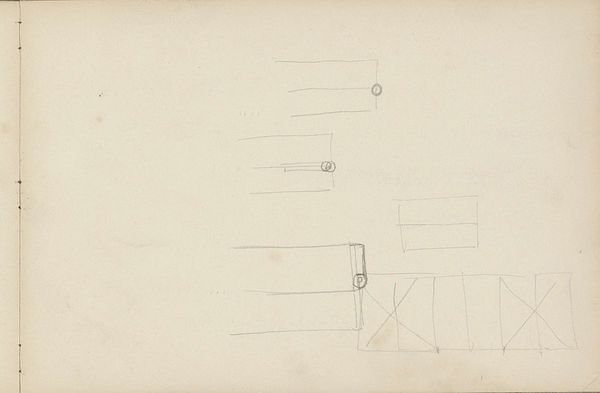
Copyright: Public Domain: Artvee
Editor: This is "Zwei Spiralen," or "Two Spirals," created by Wassily Kandinsky in 1932, using ink and drawing on paper. The delicate linework gives it a light and almost ethereal feel, but the geometric shapes create a certain tension. What catches your eye about this piece? Curator: Considering Kandinsky’s move towards geometric abstraction, I'm immediately drawn to the physical labor evident in this drawing. Think about the repetitive, almost meditative action of creating those precisely ruled lines. It’s a dialogue between the artist’s hand and the industrial feel of geometric forms, especially given the potential use of tools like rulers to make these lines. What's the relationship between these forms and the means of their production? Editor: So you're thinking about how the process itself—the labor involved—is a key part of understanding the art? Curator: Precisely. The tension you felt might stem from that very conflict: handmade marks versus the clean lines associated with mass production. Moreover, the materials themselves are quite ordinary – paper and ink, accessible tools. How does the everyday nature of these materials challenge the traditional art world’s elevation of certain media over others? Editor: I see what you mean. The use of such accessible materials almost democratizes the artistic process. Does the economic climate of 1932 play a role here? Were artists consciously choosing more readily available, cheaper materials? Curator: Absolutely. Context is key. 1932 was a period of global economic depression. Examining the material constraints offers valuable insights. Kandinsky, teaching at the Bauhaus, was certainly influenced by its ethos of integrating art with craft and industry, albeit in a tumultuous political landscape. Thinking about consumption patterns too, it urges questions: for whom and for what purpose was Kandinsky producing such pieces in that historical period? Editor: That makes me consider the accessibility not just of the materials but also of the art itself. It's a thought-provoking perspective. Curator: Indeed. By focusing on materials and production, we can peel back layers of meaning in what might initially seem like a purely formal exercise, right? Editor: Right. I'm definitely seeing this drawing in a completely different light now. Thank you.
Comments
No comments
Be the first to comment and join the conversation on the ultimate creative platform.
